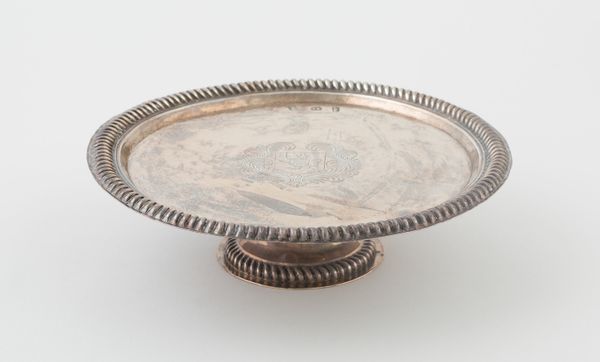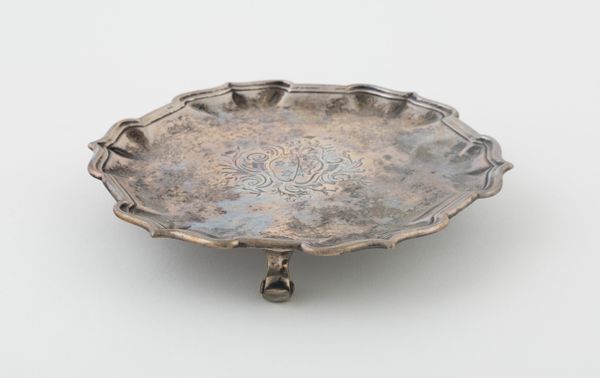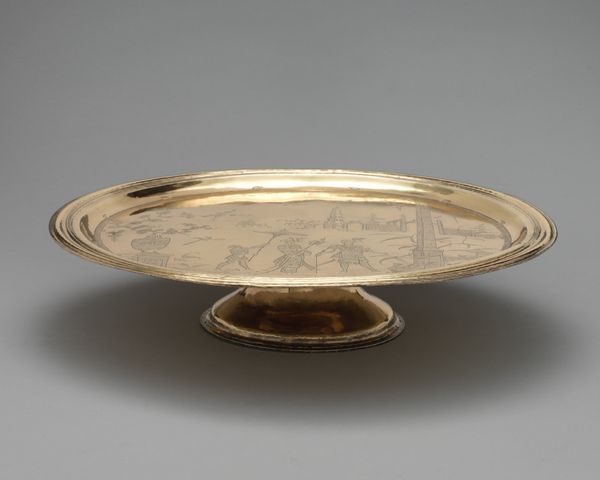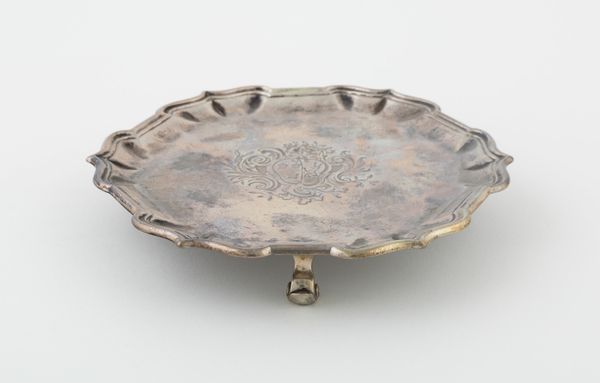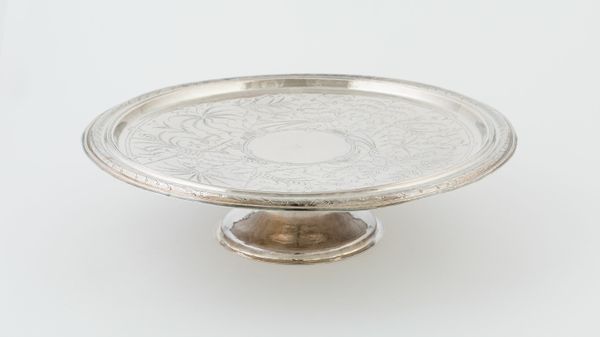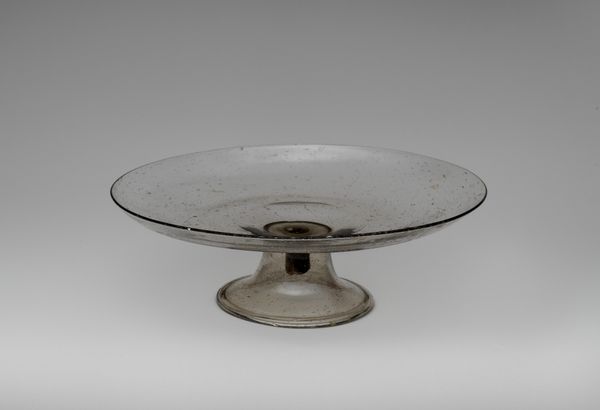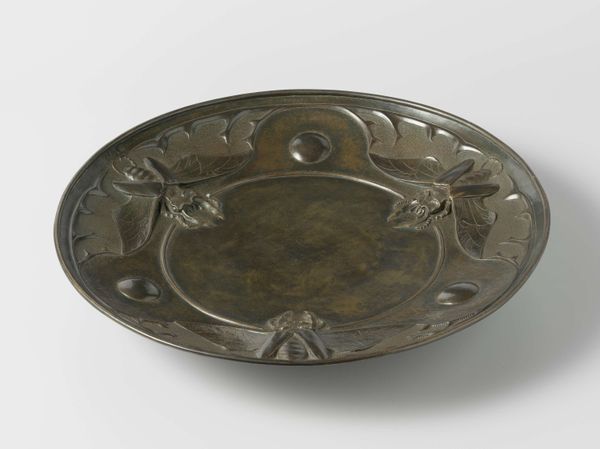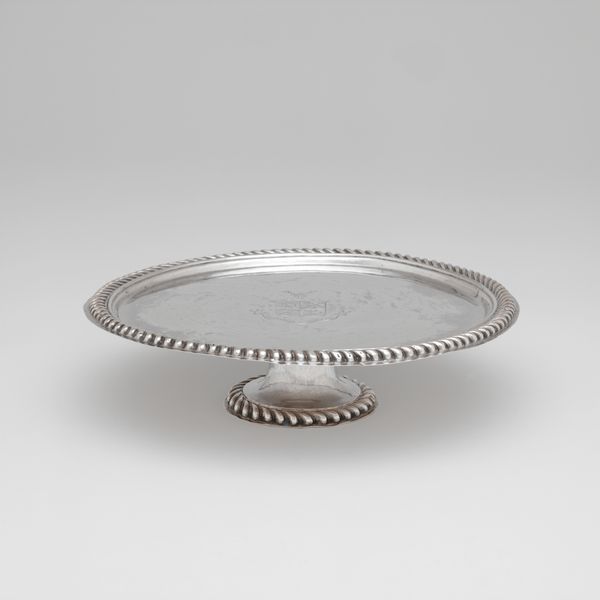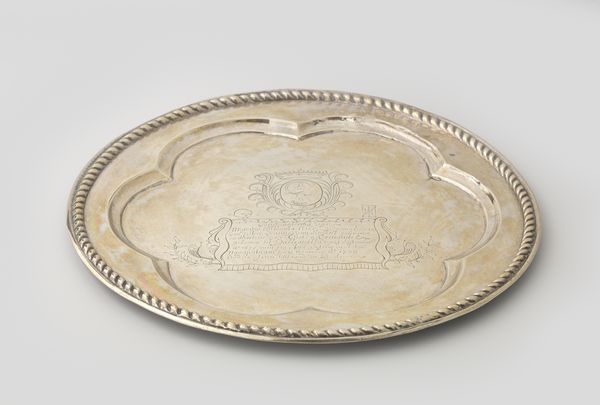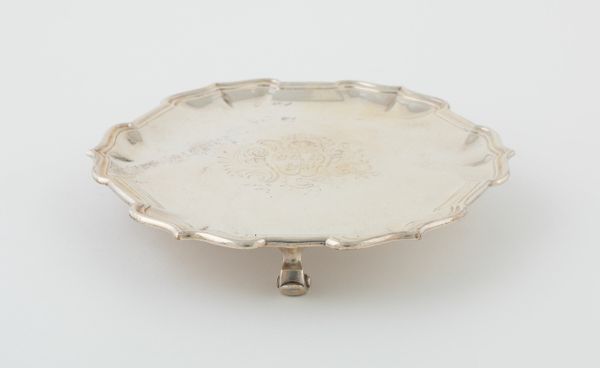
silver, inorganic-material
#
round frame
#
3d sculpting
#
circular oval feature
#
silver
#
egg art
#
pottery
#
3d printed part
#
stoneware
#
wash background
#
inorganic-material
#
ceramic
#
round circular shape
#
decorative-art
Dimensions: 7.6 × 23.2 cm (3 × 9 1/8 in.)
Copyright: Public Domain
Editor: This silver "Tazza," created between 1697 and 1698, strikes me as incredibly elegant in its simplicity. The engraved heraldic crest at the center feels very formal. What kind of significance might a piece like this have carried back then? Curator: Consider silver itself – its enduring connection to wealth, status, and even purity. The Tazza, essentially a shallow stemmed cup, served a purpose beyond mere function. The heraldic crest, as you observed, is key. Who do you think would own something bearing a family crest? Editor: Well, someone from nobility, or with aspirations of joining those circles. A way of broadcasting their lineage and power? Curator: Precisely. Visual symbols were crucial. Think about the symbolism embedded within that crest itself – the animals, the shapes, the arrangement, each carrying layers of inherited meaning that only the initiated could fully grasp. It’s about creating and reinforcing a cultural narrative, isn't it? Editor: Yes, it's interesting how an object can function as a family's three-dimensional emblem and how objects are used to keep ideas alive across generations. Is it like memory made material? Curator: Exactly. It is like memory made material. Moreover, each time this Tazza was used, it reinforced the owner's sense of identity, their place in society, the historical weight of their family name. What did we just reveal? Editor: How an everyday object is really so much more than that. A tangible connection to cultural heritage and family identity, like a flag, almost. Thank you for opening my eyes. Curator: The pleasure was all mine.
Comments
No comments
Be the first to comment and join the conversation on the ultimate creative platform.
